Customer feedback is an essential element that tells you how customers feel about their experience with your products and services and what you can do to make their experiences better. While there are many kinds of customer feedback surveys used for collecting feedback, rating scale surveys are one of the most commonly used surveys by businesses around the world.
These surveys offer a standardized approach to measuring sentiments, attitudes, and experiences, allowing you to measure customer satisfaction and experience in quantitative terms. Rating scale questions are easy to recognize and understand for the respondents, so you can expect a good response rate on these surveys.
In this article, we will explore what rating scale surveys are, their advantages, types, and how you can create effective surveys, and some practical tips to write better rating scale questions. Let’s get started!
TL;DR
-
Rating scale surveys are structured questionnaires that ask the customers to rate their experiences or agreement with a product, service or business on various kinds of rating scales.
-
These surveys are easy to conduct, easy to understand for the respondents, highly efficient and versatile, and foster easy quantifiable data collection and analysis.
-
There are various types of rating scales and surveys - smiley rating surveys, star rating surveys, Likert scale surveys, NPS surveys, CSAT surveys, and CES surveys.
-
To create effective surveys, you should follow some best practices - choose the right rating scale as per your goals, clarify the end scale points, create simple and concise rating scale questions, use survey logic, and add a follow-up question to get deeper insights.
-
You can easily design a rating scale survey with the help of a good customer feedback software. Zonka Feedback is one such tool that can serve the purpose.
Create & Send Rating Scale Surveys
Get started with Zonka Feedback's free trial and measure customer feedback with powerful Rating Scale Surveys.

What is a Rating Scale Survey?
A rating scale survey is a structured questionnaire that includes closed-ended questions which ask the customers to rate their satisfaction levels or agreement with a particular product, service, or any aspect of a business.
These surveys are:
-
Commonly employed in research to assess attitudes, opinions, and preferences.
-
Easy to understand for the respondents.
-
Provide standardized data for analysis and comparison.
-
Used in fields like market research, customer feedback, and employee engagement to gauge sentiment.
-
Include closed-ended questions that provide different types of rating options like numerical rating scale, smiley rating questions, star rating questions, Likert scale questions and more.
Let’s explore why rating surveys are a great way to collect customer insights.
Why use Rating Scale Surveys?
Rating scale survey has been one of the top choices for companies in various industries because of its simplicity and ease of implementation. Here are some advantages of rating scale surveys to help you understand why using rating scales & surveys can be beneficial for your business.
-
Easy to Conduct - Rating scale surveys are relatively simple to administer and collect valuable customer feedback data.
-
Easy to Understand - Rating surveys are super easy for your customers to understand and respond to. They have a potential to rise above the language barriers and lead to a high response rate to your survey.
-
Provides Quantifiable Data - Rating scales surveys provide numerical data, making it easy to analyze and quantify responses.
-
Standard tool for Comparison - Rating scale surveys can be used as a comparative scale to compare feedback and performance. Using the same set of rating scale questions and response options ensures consistency and comparability across respondents.
-
High Efficiency - Rating scale surveys allow for quick data collection, making them suitable for large-scale studies or when time is limited.
-
Versatility - Rating scales can be adapted to measure a wide range of attitudes, opinions, and experiences.
-
Easy Analysis - As rating scale surveys are simple in nature, the feedback data collected through them is easy and less time-consuming when it comes to analysis and reporting of the data.
Let’s explore the various types of rating scale surveys that you can use to collect customer feedback.
Types of Rating Scales for Survey
There are multiple types of rating scales that you can use for your business as per your survey objectives and business requirements. Let's explore each type of rating scale.
1. Star Rating Surveys
Star rating surveys are a common form of rating surveys where star ratings are used as answer options for the customers to respond to a rating scale question. In a star rating survey, customers are asked to rate their experience by choosing the number of stars to rate a particular product, service, or business.
For instance, in a 5-star survey, customers are given five answer options to choose from. Customers can choose from 1 star to 5 stars depending upon how satisfied they are with the product or service. 1 star is the minimum score and depicts minimum or no satisfaction, whereas 5 stars is the highest rating of the survey depicting the highest satisfaction and totally satisfied customers.
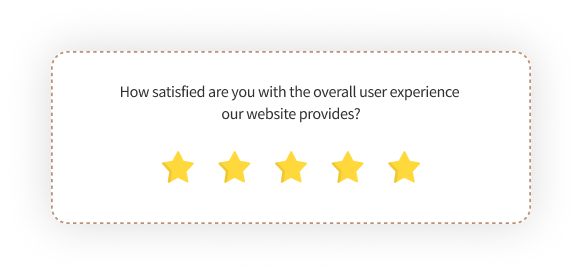
2. Smiley Rating Surveys
Smiley rating or smiley face surveys are those in which smiley faces are used as rating options in the rating scale questions to let the target audience choose the smiley with facial expressions that depict the satisfaction or happiness level of the customers with a product, service, or business.
To respond to a smiley face rating scale question, the customers can choose among options like laughing, loving or happy face, neutral face, sad, crying or angry face.
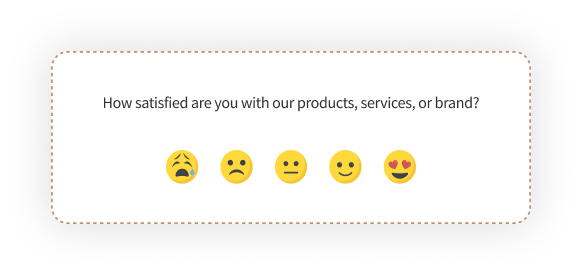
3. Likert Scale Surveys
Likert scale surveys are those wherein a matrix or series of statements is given to the customers and customers are asked their opinions, attitudes, or agreement on those statements or aspects. Common answer options for different questions are provided to the customers from which they can choose their options to respond to the rating scale question about each aspect covered in the survey.
You can leverage a Likert scale survey template to facilitate straightforward responses, allowing customers to express themselves by choosing from predefined answer options.
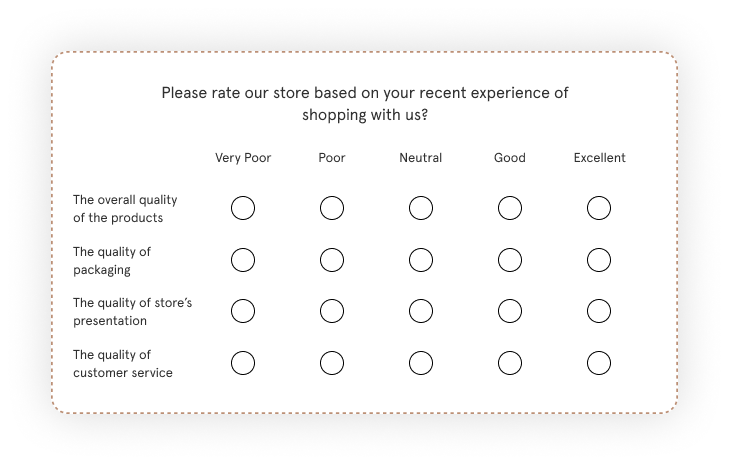
4. NPS Surveys
NPS surveys are a popular rating scale survey metric that are used by businesses around the world to measure customer loyalty by asking the customers to rate their likeliness to recommend a product, service, or business to their friends and known ones.
Based on your recent experience, how likely are you to recommend our services to your friends and colleagues on a scale of 0 to 10?
A scale of 0 to 10 is provided to the customers to respond to the question where 10 means Most Likely to Recommend, whereas 0 means Not at all Likely to Recommend.
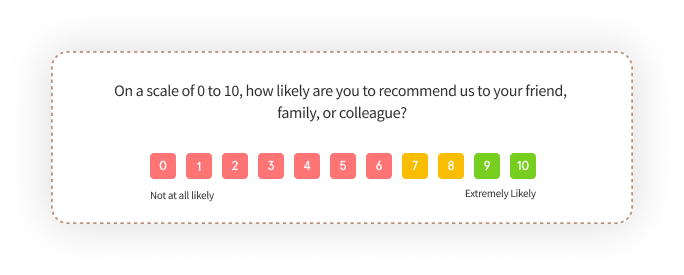
Survey respondents of an NPS survey are divided into three categories namely, promoters, passives, and detractors and the data is used to find the Net Promoter Score of the business.
7. CSAT Surveys
CSAT surveys are those which are used to measure the customers’ satisfaction or happiness with a product, service, interaction, or business. In this survey, customers are asked to rate their experience or satisfaction with their experience on 5-point rating scales, where the highest rating represents maximum satisfaction and the lowest rating represents minimum or no satisfaction.
How would you rate your recent experience with our us?
The rating options can be represented in different ways like ratings from 1 to 5, adjectives from Excellent to Poor, self-explanatory smileys, hearts, and more.
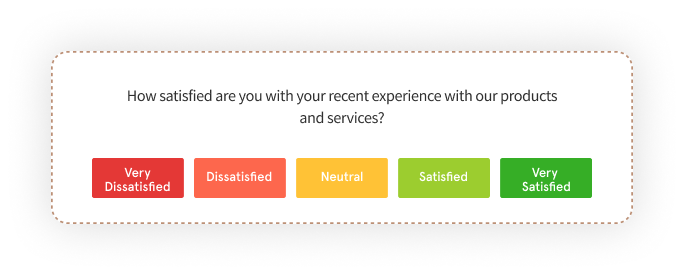
The response data of the survey is used to find the Customer Satisfaction Score (CSAT score) by calculating the average of all responses.
6. CES Surveys
Customer Effort Score or CES surveys are those which businesses use to measure the customers’ perceived efforts to get a job done or an issue resolved. In a CES question, customers are asked their agreement or disagreement to a statement which says that the company helped them enough to get their work done or handle their issues.
To what extent do you agree or disagree with the following statement? "The company helped me enough to handle my issues and get my work done."
Customers are provided with seven rating options to choose from, which are, Strongly Agree, Agree, Somewhat Agree, Neutral, Somewhat Disagree, Disagree, and Strongly Disagree.
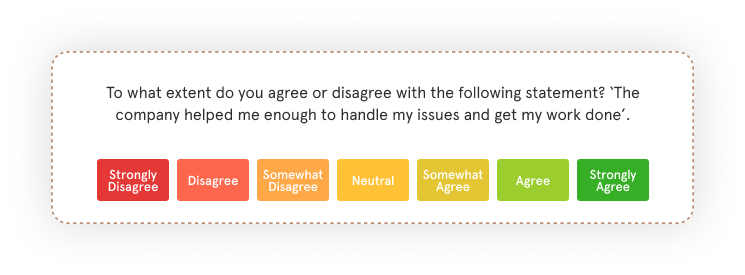
Based on their opinions and agreements or disagreements, customer can choose any option from Strongly Agree to Strongly Disagree. Let’s learn some cool tips to write better rating scale questions from your surveys.
Tips to Write Better Rating Scale Questions
-
Choose the right rating scale - While choosing your survey questions, keep your survey objectives in mind, and accordingly choose the rating scales that best suit your requirements. For instance, if you want to measure customer loyalty, choose an NPS scale; if you want to measure customer effort, choose a CES scale. Similarly, choose a CSAT scale, smiley rating, or star rating to measure customer satisfaction.
-
Always clarify the endpoints of your rating scale - Sometimes, customers get confused regarding which is the highest rating point and which is the lowest. So always clarify the direction of your survey scale by telling them what your end scale points mean. For example, in an NPS survey, 10 means most likely and 0 means not at all likely to recommend a business, which you should clearly mention in the survey options.
-
Keep 1 as the lowest rating and the other end as the highest rating - There is a standard followed almost everywhere in the surveys that the lowest number which is 0 or 1 is the pain point, and the highest number is the highest positive rating. Follow this standard and avoid going vice-versa as it may confuse the customers leading them towards sharing inaccurate responses.
-
Keep your questions simple and concise - Keep your questions very simple, concise, and easy to understand for the customers. If you use complex questions, it may confuse the respondents and affect the response rate of your survey, This way, you will be unable to take advantage of the simplicity of rating scale surveys.
-
Avoid double-barreled questions - Always ask about one product, service, or aspect in one question. Asking about two or more aspects can lead to customers leaving the survey half-filled or sharing inaccurate responses as customers may have different feedback for different aspects.
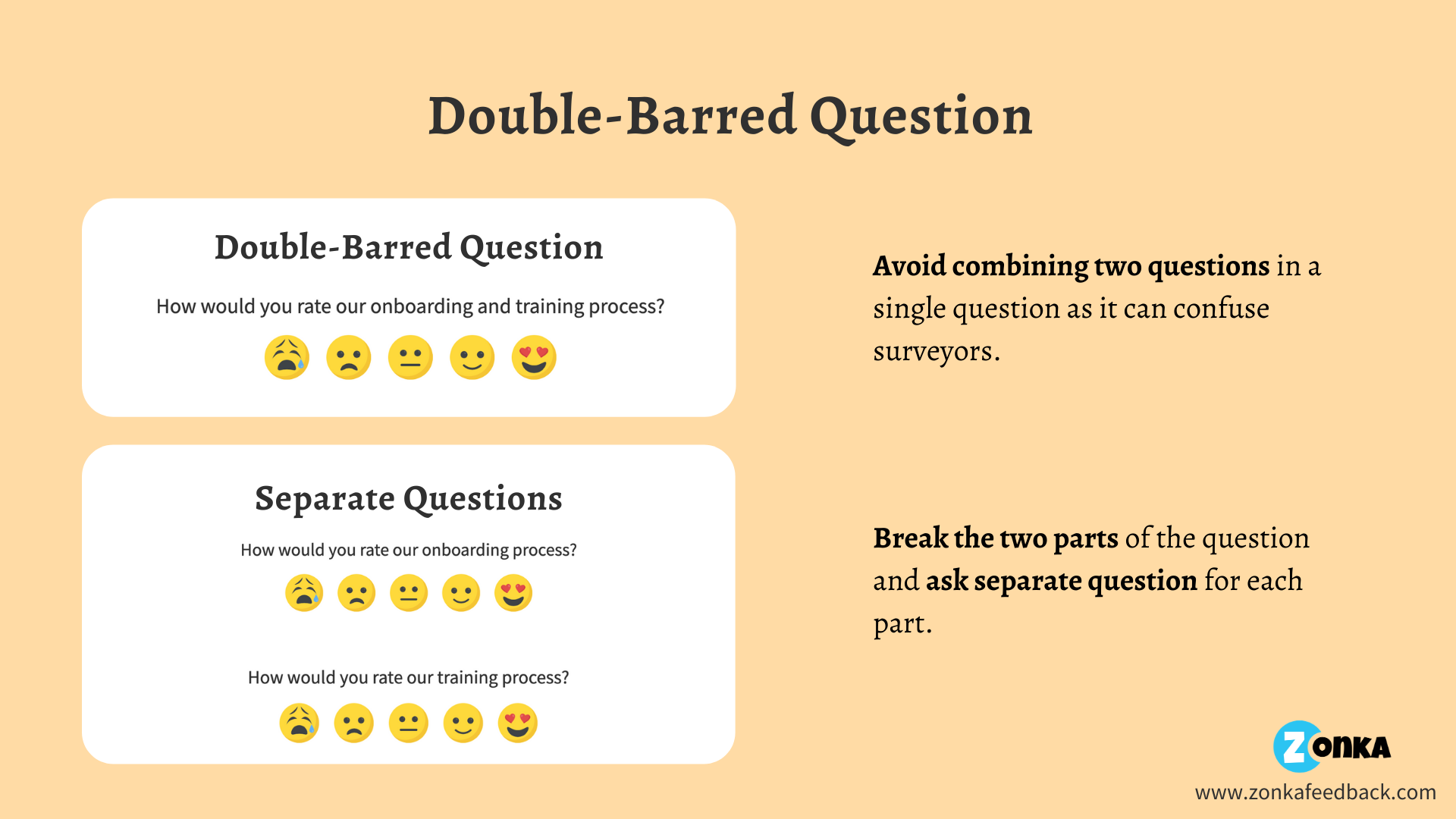
-
Make your Surveys Logical - Add logic to your surveys and ask the right questions based on the customers’ previous responses. A good online survey tool can help you do that with its feature of Skip logic and question branching. With this feature, you can trigger questions based on the customers’ previous responses so that your surveys become dynamic and sound logical to your customers.
-
Add a follow-up question to gain deeper context - In order to gain a deeper understanding of customer experiences, consider adding an open-ended follow-up question in your surveys to ask the reason for the rating shared by the customer. This will help you know the why behind the feedback, which will help you make better decisions to improve customer satisfaction.
Let’s learn how you can design rating scale surveys.
Designing Rating Scale Surveys
Designing rating scale surveys may seem to be a daunting task, but the key is to use a good customer feedback software for this purpose. With the help of an effective customer feedback software and survey tool, you can easily create effective rating scale surveys and use them to gather customer insights about your products, services, any aspect of the business, and the overall business.
Zonka Feedback is one such software that makes this task easier for you with its advanced features and functionalities. Let’s learn how you can use Zonka Feedback to create surveys effectively.
Using Zonka Feedback to Create Rating Scale Surveys
Here are the steps to create a rating scale survey with Zonka Feedback.
-
Sign in to your Zonka Feedback Account and choose the option to create a survey.
-
Choose among hundreds of ready-to-use templates to create your survey as per your survey needs and industry. You can also choose to create a new survey from scratch.
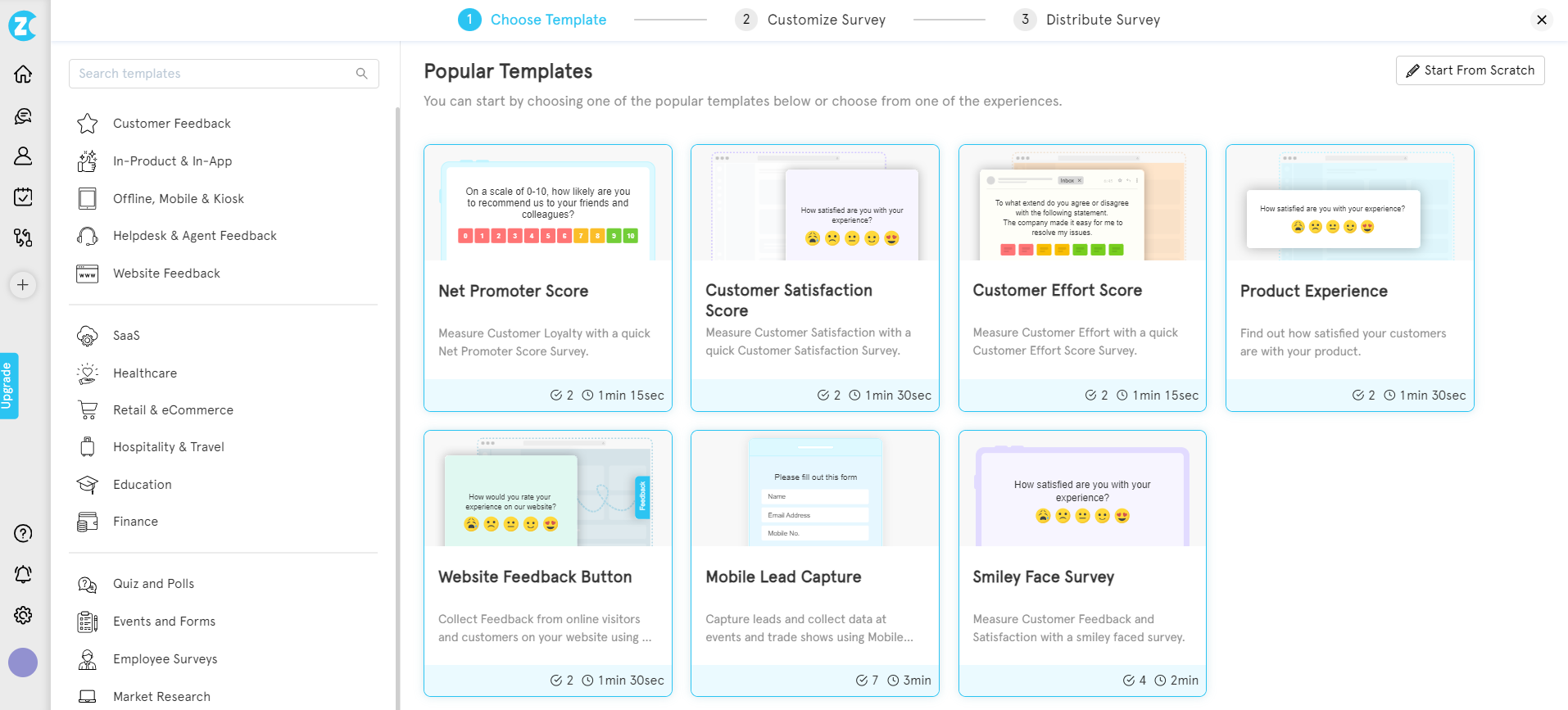
-
Go to the Survey to add questions.
-
Now you can choose your survey questions among the various available question types like Matrix, NPS, CSAT, CES, smiley rating, star rating, and more.
-
By selecting the Matrix/Rating from the rating and scales, you can further choose rating scales like 1-10 rating scales, 1-7 rating scales, 1-5 rating scales, when your rating scale question appears on the screen.
-
By selecting the CSAT question type, you can further choose question types like star-rating, heart-rating, smiley-rating, and more.
-
Click on the Edit Box at the right corner of the screen to customize the survey.
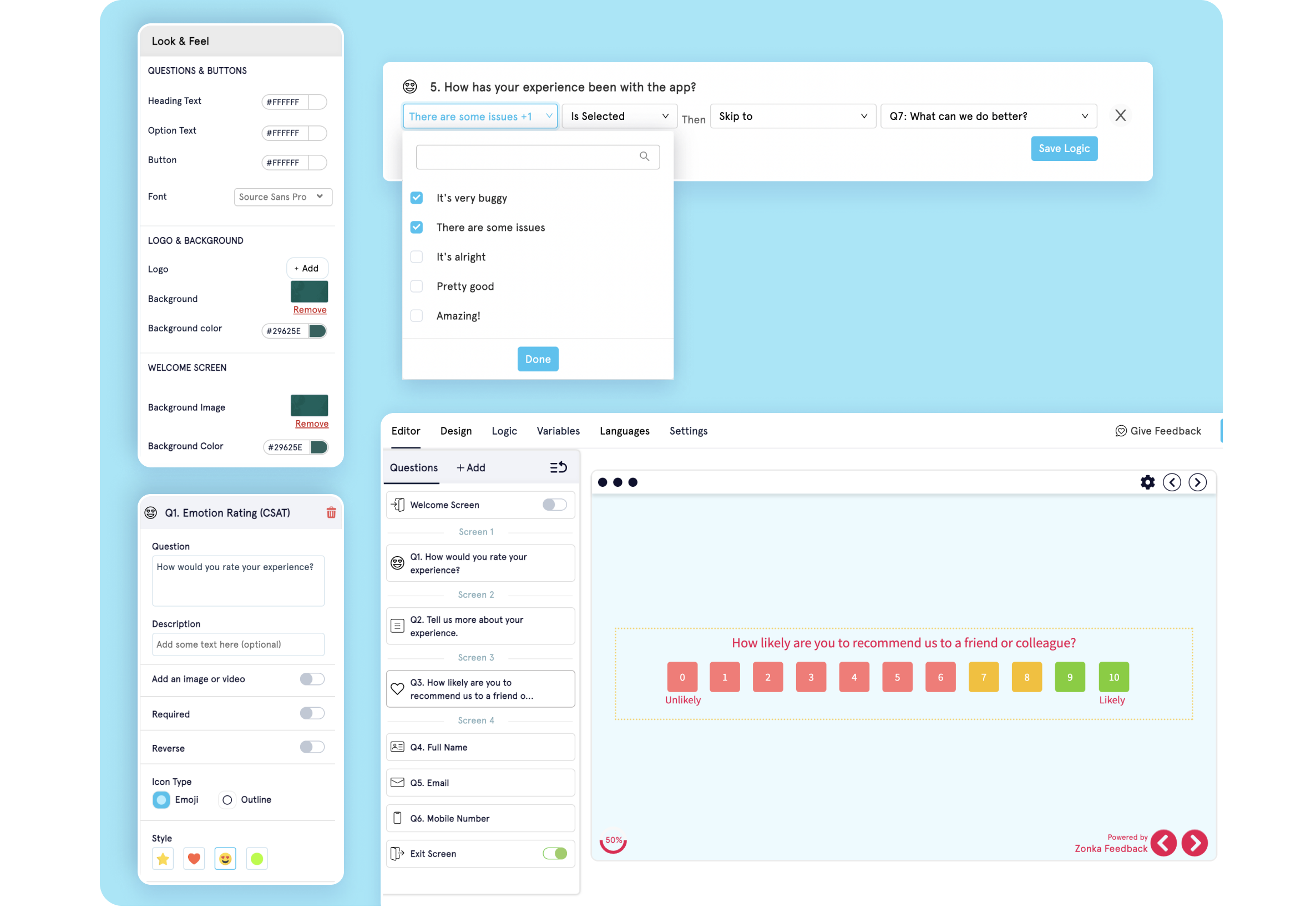
-
Customize the survey questions as per your survey requirements.
-
Preview the survey before sending it.
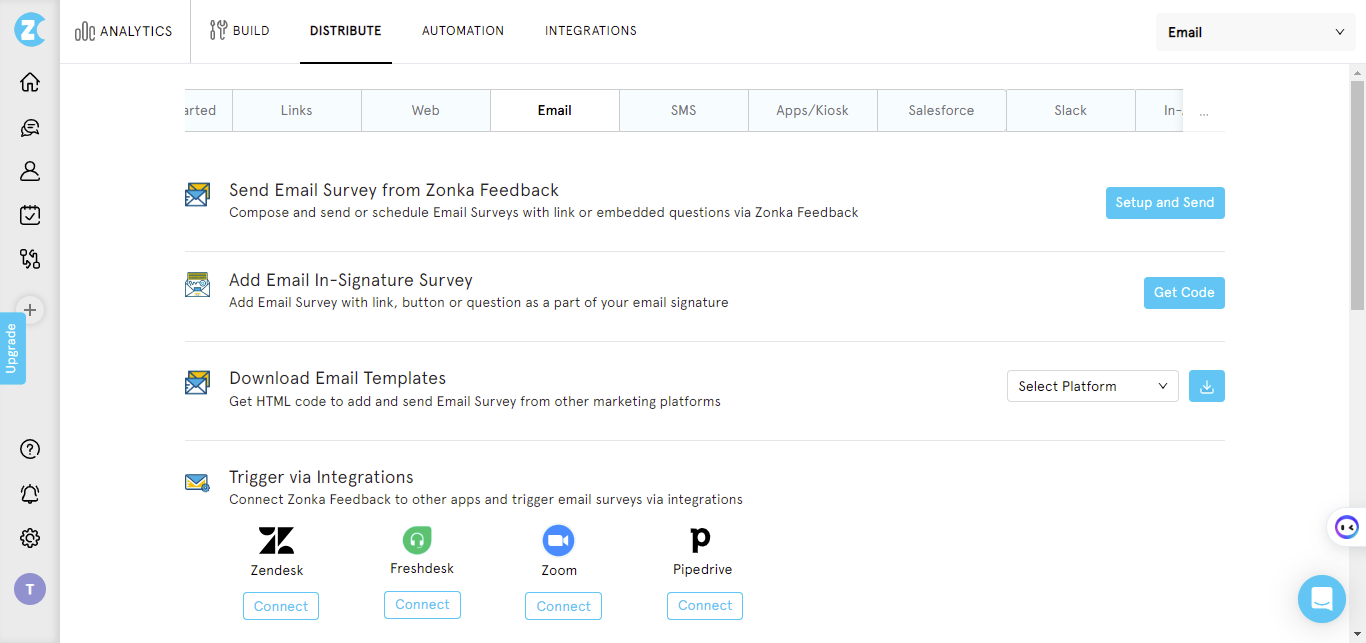
Conclusion
Rating scale surveys are one of the most common and effective ways to survey your customers and collect valuable customer feedback. You can choose among various rating types as per your survey objectives and business requirements. With the help of a good survey tool, you can easily create and make use of these surveys.
Zonka Feedback is one such software to serve your purpose. With this tool, you can choose from a variety of survey question types and templates for creating surveys of the type you want. The software not only helps you collect feedback but also enables you to take action on feedback and close the feedback loop effectively to improve customer experience.
You can schedule a demo and harness the power of rating scale surveys to collect valuable feedback from your customers and improve customer experience.
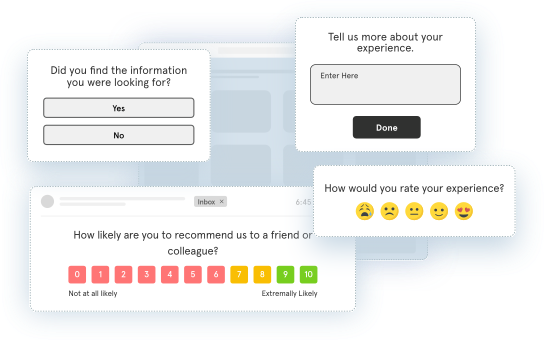


.png)




.jpg)



